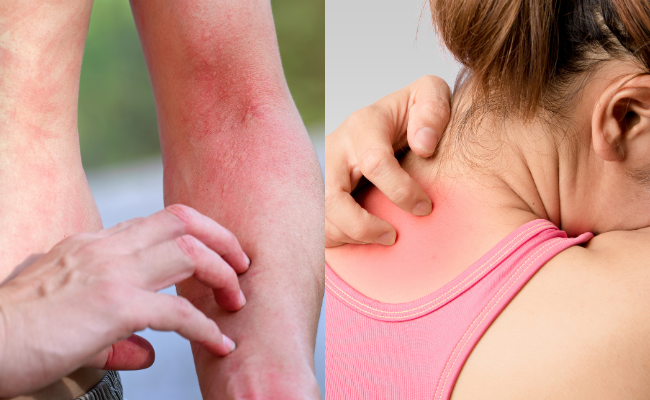How to Treat Heat Rash?
- October 28, 2023
- No Comments

What is Heat Rash?
Heat rash, also referred to as prickly heat or miliaria, is a prevalent skin condition arising from blocked sweat ducts, leading to sweat retention beneath the skin. This obstruction often manifests as the formation of small red bumps or blisters on the skin's surface. Commonly observed in hot and humid climates, heat rash is more likely to affect regions of the body characterized by skin-to-skin contact.
The condition typically manifests as small, fluid-containing bumps that may appear clear, white, or red on the skin. These eruptions commonly emerge in areas susceptible to profuse sweating, including beneath the breasts, in the groin area, or on the face.
Why is Treating Heat Rash Important?
Treating heat rash is important for several reasons. First and foremost, the condition can be uncomfortable, causing itching, irritation, and a prickling sensation. Additionally, if left untreated, heat rash can lead to more severe complications, such as infection or heat-related illnesses. Effectively managing heat rash is crucial for alleviating symptoms and preventing further complications.
How to Treat Heat Rash?
- Cooling the Skin: The primary step in treating heat rash is to cool the affected skin. Move to a cooler environment, preferably one with air conditioning or good ventilation. Avoid direct sunlight and activities that may further increase body temperature.
- Loose-Fitting Clothing: Wear loose, breathable clothing to allow better air circulation and reduce friction on the affected skin. Avoid tight clothing that can exacerbate the condition.
- Cool Compress: Apply a cool compress to the affected area. Use a clean cloth soaked in cool water and gently pat the skin. Avoid using ice directly on the skin, as it can cause further irritation.
- Keep the Skin Dry: Ensure the affected skin remains dry. Pat the area gently with a soft towel after bathing and avoid excessive moisture, as it can contribute to the blockage of sweat ducts.
- Over-the-Counter (OTC) Creams: OTC creams containing ingredients like calamine or hydrocortisone can help reduce itching and inflammation associated with heat rash. Follow the product's instructions for proper application.
- Stay Hydrated: Drink plenty of fluids to stay hydrated. Adequate hydration supports the body's cooling mechanisms and can help prevent further episodes of heat rash.
- Avoiding Irritants: Avoid using harsh soaps or lotions that may aggravate the skin. Opt for mild, fragrance-free products to prevent additional irritation.
Treatment Solutions for Heat Rash:
- Calamine Lotion: Applying calamine lotion can help soothe itching and reduce inflammation associated with heat rash. This can be particularly effective in cases of mild heat rash.
- Topical Steroids: In more severe cases, a healthcare professional may recommend a topical steroid cream to alleviate inflammation and itching. It's essential to use these under medical supervision.
- Oral Antihistamines: Oral antihistamines can be effective in reducing itching and discomfort associated with heat rash. Consult a healthcare professional before using them, especially in the case of children.
- Medical Evaluation: If the heat rash persists, worsens, or is accompanied by signs of infection (such as pus or increasing redness), it's crucial to seek medical attention promptly.
Benefits of Treating Heat Rash:
- Relief from Discomfort: Effective treatment provides immediate relief from the discomfort associated with heat rash, including itching, irritation, and a prickling sensation.
- Prevention of Complications: Timely intervention helps prevent complications such as infection or the development of more severe heat-related illnesses.
- Faster Healing: Proper treatment accelerates the healing process, allowing the skin to recover more quickly from heat rash.
- Improved Quality of Life: Managing and treating heat rash ensures a better quality of life, allowing individuals to go about their daily activities without the discomfort and distraction caused by the condition.
- Prevention of Recurrence: Adopting preventive measures and addressing heat rash promptly can reduce the likelihood of recurrence, especially in individuals prone to the condition.
Comments (0)